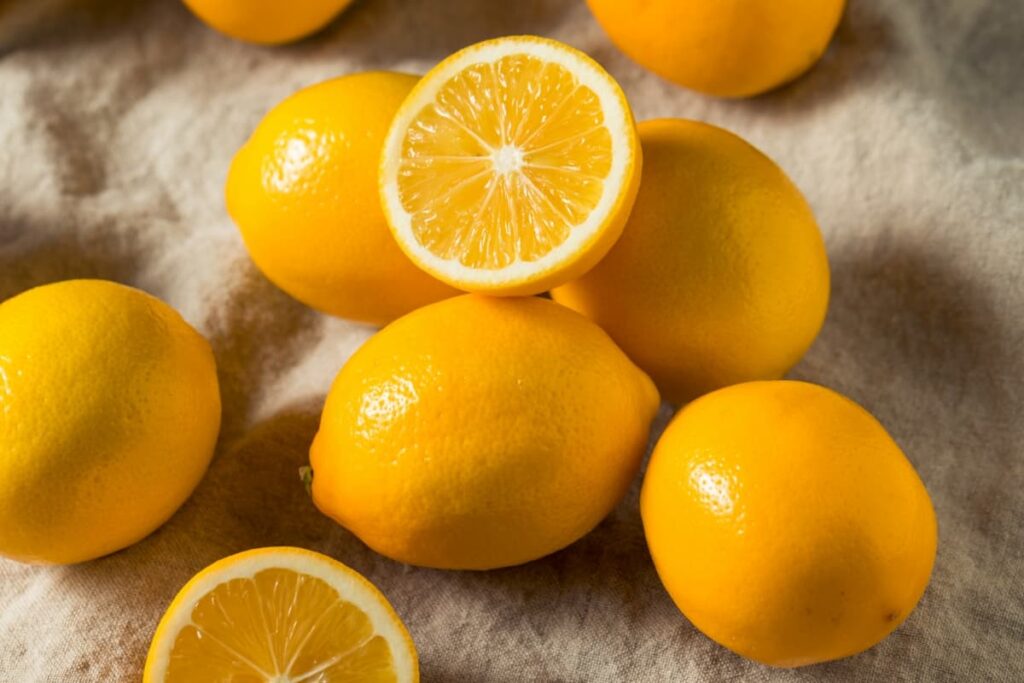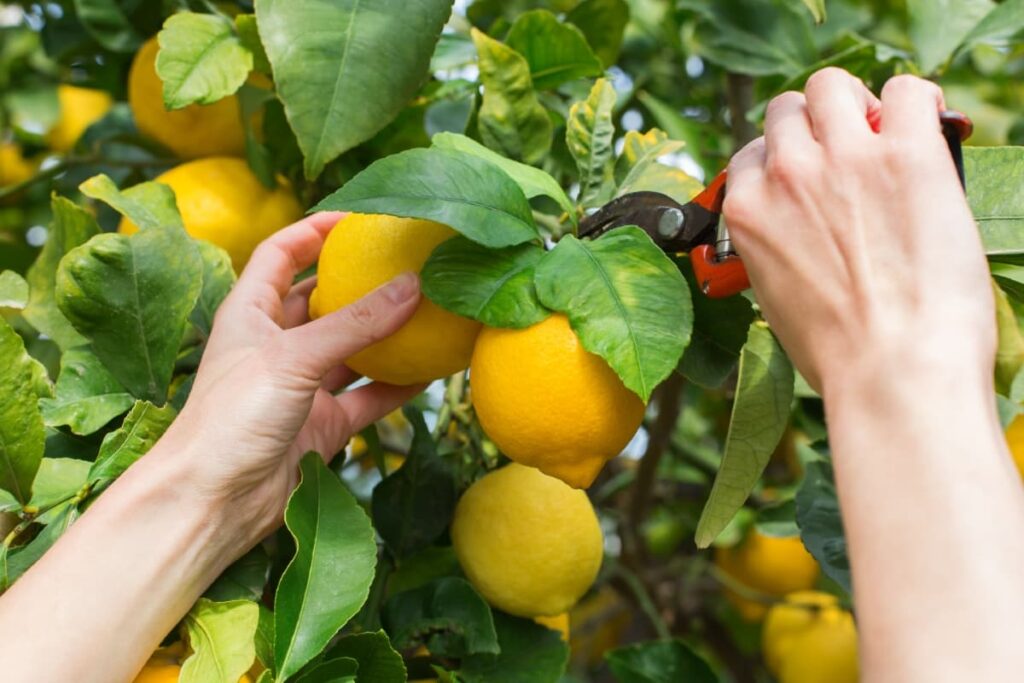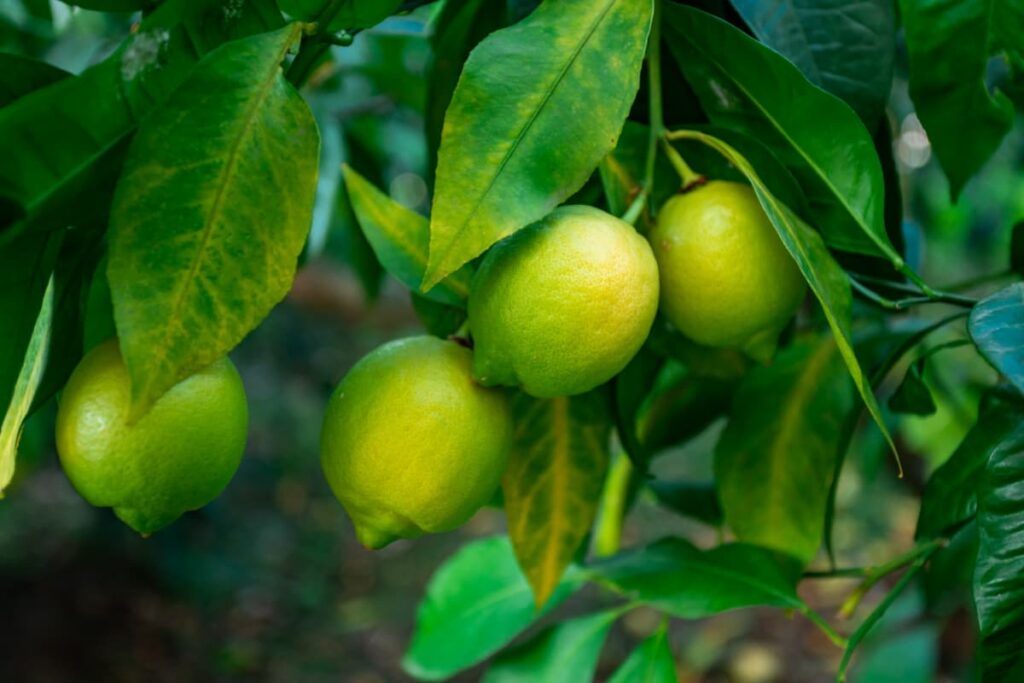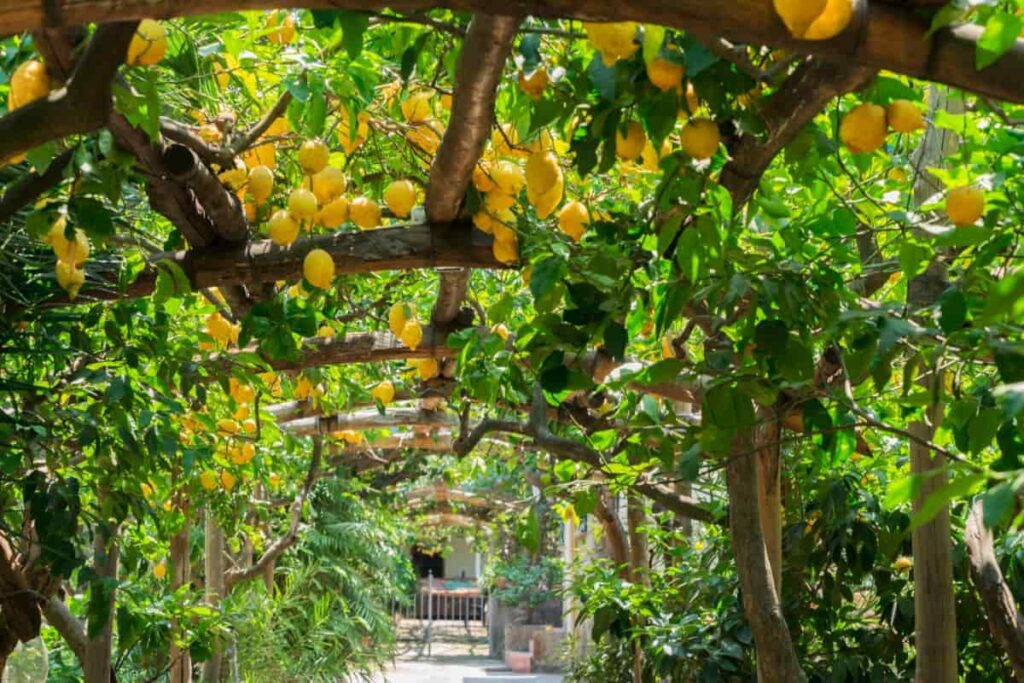Meyer lemons, a delightful citrus fruit known for their unique characteristics, have captivated the taste buds of many. With a fascinating history and origins rooted in China, these lemons are believed to be a cross between regular lemons and Mandarin oranges. Growing Meyer lemon trees can bring numerous benefits to both experienced gardeners and beginners alike.

Growing Meyer Lemon
Growing Meyer Lemons Profile
| Attribute | Description |
| Scientific Name | Citrus × meyeri |
| Origin | China |
| Type | Hybrid citrus fruit |
| Appearance | Knobby, a thick layer of white pith, and bright yellow inner flesh |
| Taste | Mellow, sweet flavor |
| Texture | Thick textured skin and medium yellow pulp |
| Tree Size | Standard Meyer lemon trees – 6-10 feet tall, while the dwarf variety – 5-7 feet |
| Lifespan of Tree | Live 30 or more years |
| Growing Zones | 9-11 |
| Seasonality | Spring-fall |
| Culinary Uses | Different savory dishes, including salads, roast chicken, and stews. |
| Storage | Refrigerator for up to 4 weeks |
Choosing the Right Variety
Choosing the right variety of Meyer lemons is an important step in ensuring a successful and fruitful harvest. With several different options available, it’s crucial to consider factors such as climate, space availability, and personal preferences. The popular variety is the Improved Meyer Lemon. This cultivar is known for its high fruit production and disease resistance.
If you live in a colder climate or have limited space, you might consider the Potted Meyer Lemon Tree. This dwarf variety is well-suited for container gardening and can be moved indoors easily during the winter season. For those looking for a traditional lemon flavor with a twist, the Variegated Pink-Fleshed Eureka Lemon could be an excellent choice.
Planting Your Tree
Timing: Timing plays a crucial role in planting your Meyer lemon tree. Ideally, it would help if you planted it during the spring or fall when temperatures are moderate. This allows the grape vine tree to establish its roots before facing extreme weather conditions.
Location: When choosing a location for your Meyer lemon tree, look for a spot that receives full sunlight for at least six hours a day. Meyer lemons thrive in warm climates but can tolerate some cold temperatures if protected.
Soil:These trees prefer well-draining, slightly acidic soil with a pH level between 5.5 and 6.5. Sandy loam or loamy soil works best, as it allows water to drain away from the roots while retaining enough moisture for healthy growth.
Propagation Methods
Propagation is an important step in growing Meyer lemon trees. There are several methods you can use to propagate your tree, including seeds, cuttings, and grafting. Starting Meyer lemon from seeds is a simple and cost-effective option. Remove the seeds from ripe lemons and plant them in well-draining soil. Keep the soil moist and wait for seed germination to occur. However, remember that seed-grown trees may take longer to bear fruit and may not produce true-to-type offspring.
Another method is through stem cuttings. Take a 6-8 inch cutting from a healthy tree, making sure it has at least three nodes. Remove the lower leaves carefully and dip the cutting end in the rooting hormone before planting cutting in a pot with well-draining soil. Mist regularly to maintain humidity until roots develop.
In case you missed it: High Yield Hybrid Lemon Varieties in India

Grafting is another common method used for propagating Meyer lemons. It involves joining two different citrus varieties together – one as the rootstock (the bottom part) and one as the scion (the top part). This technique allows you to combine desirable traits from different varieties into a single tree.
Watering and Mulching
Proper watering ensures that your tree gets the moisture it needs, while mulching helps retain soil moisture and suppresses weed growth. Meyer lemon trees prefer deep, thorough watering rather than frequent shallow watering. Mulching around the base of your Meyer lemon tree has numerous benefits. It helps conserve moisture from the soil surface. Also, mulch acts as an insulator, protecting the roots from temperature extremes.
Fertilizing
When it comes to fertilizing, timing is key. It is recommended to feed your Meyer lemon tree three times a year – in early spring, late spring, and early fall. Choosing the right fertilizer is equally important. Look for a balanced citrus-specific fertilizer with equal amounts of N, P, and K. Additionally, make sure it contains micronutrients like iron, manganese, zinc, and copper.
Pruning and Training
Regular pruning helps to shape the tree, control its size, promote air circulation, and remove any dead or diseased branches. When it comes to pruning your Meyer lemon tree, timing is crucial. It’s best to prune the Meyer lemon tree in late winter or early spring.
Training your Meyer lemon tree involves shaping it into a desired form as it grows. You can choose between an open-center (vase-shaped) or central leader training system. To train an open-center form, remove vertical shoots that compete with the main scaffold branches and create a balanced framework of 3-5 well-spaced primary limbs. For a central leader form, select one strong upright shoot as the central leader and prune lateral branches around it to encourage upward growth.
Pest and Disease Management
These beautiful citrus fruits can be affected by several pests and diseases, which can significantly affect their health and yield. The common pest that affects Meyer lemon trees is the citrus leafminer. This tiny insect lays its eggs on new leaves, causing unsightly tunnels as the larvae feed inside. To prevent infestation, regularly inspect your tree for any signs of leaf damage and promptly remove affected leaves. Another pesky critter to watch out for is the aphid. You can control aphids by spraying a mild solution of soapy water directly onto the affected areas.
Meyer lemons are also susceptible to fungal diseases such as powdery mildew and root rot. To prevent these diseases, ensure good air circulation around your tree by pruning overgrown branches. Regularly inspecting your Meyer lemon tree for pests and diseases will allow you to take immediate action if necessary. Remember to use organic pest control methods whenever possible to minimize harm to beneficial insects in your garden.
When and How to Harvest
These citrus fruits are best picked when they have reached their full color and size but before they become overripe. The time will change depending on your climate and growing conditions, so it’s important to pay attention to the fruit’s appearance. A ripe Meyer lemon will have a bright yellow or orange-yellow skin. To harvest your Meyer lemons, grasp the fruit firmly and twist gently until it detaches from the tree. Once harvested, store your Meyer lemons at room temperature for up to two weeks or refrigerate them for a longer shelf life.
Winter Care
During the winter months, it is important to give your Meyer lemon tree some extra care and protection. The cold temperatures can be harsh on citrus trees, but with proper tree care, you can help ensure their survival. The most important aspect of winter care for the Meyer lemon tree is protecting your tree from freezing temperatures. If you live in an area where frost or freezing temperatures are common, consider covering your tree with a frost cloth or blanket.
In case you missed it: How to Grow a Finger Lime in Pots from Seed and Cuttings: Explore from Planting to Harvest

This will help insulate the Meyer lemon tree and protect it from cold winds. It’s also important to monitor the moisture levels in the soil during winter. While you don’t want to overwater your tree, you also don’t want the soil to dry out completely. Check the soil regularly and water as needed to keep it moist but not soggy.
Common Challenges
While Meyer lemon trees can tolerate cooler temperatures compared to other citrus varieties, they still need protection from frost or freezing conditions. Consider covering young trees with blankets or moving potted plants indoors during cold snaps. Yellowing leaves or stunted growth indicate nutrient deficiencies in the soil. Conduct regular soil tests and supplement with appropriate fertilizers if necessary. Finding the right watering balance is crucial for healthy tree growth.
Yield
The yield you can expect from your tree will change based on several factors, including the age and health of the tree, proper care and maintenance, and environmental conditions. Each Meyer lemon tree can produce an impressive amount of fruit each year. On average, you can expect anywhere from 50 to 100 pounds of lemons per tree.
In case you missed it: How to Grow Kaffir Lime in a Pot: Growing from Seed and Cuttings in Containers

Conclusion
This versatile fruit not only adds beauty to your landscape with its glossy green leaves and fragrant flowers, but it also comes with a host of benefits. The main advantage of growing Meyer lemons is their unique flavor profile. Growing your own Meyer lemon tree allows you to control its care and cultivation methods. You have the power to ensure that it receives proper nutrition from organic fertilizers, avoids harmful chemicals, and maintains ideal watering practices.
- Budget Friendly Sheep Shed Ideas: Cheap and Low-Cost Tips
- How Much Do Cattle Farmers Make: Revenue Streams in Cattle Farming
- Management Pests and Diseases in Your Cotton Field
- Sheep Farming Business Plan for Beginners
- Aquaponic Farming at Home: A Step-By-Step Guide
- Profitable Village Farming Business Ideas in 2024
- High-Yield Aquaculture: Fast-Growing Fish for Farming
- Effective Fish Pond Construction Techniques for Beginners
- Irrigation and Water Management in Pineapple Farming
